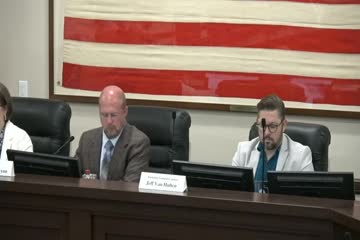School safety conferences reveal urgent need for reform
July 17, 2024 | School Security Task Force, Utah Subcommittees, Commissions and Task Forces, Utah Legislative Branch, Utah

This article was created by AI summarizing key points discussed. AI makes mistakes, so for full details and context, please refer to the video of the full meeting. Please report any errors so we can fix them. Report an error »

During a recent government meeting, an update was provided on two significant school safety conferences attended by a representative, shedding light on the ongoing efforts to enhance safety protocols in educational environments.
The first event, the Texas School Safety Conference, took place in San Antonio from June 22 to 26. This larger gathering featured a strong law enforcement presence and focused on statewide safety planning and data-driven leadership. Key discussions included an after-action review of the Uvalde incident, emphasizing the need for improved incident command and communication strategies. The conference also addressed the financial impact of false threats, which have cost Texas K-12 schools over $82 million, alongside discussions on behavioral threat assessments and the importance of collaborative accountability among districts.
A notable highlight was the introduction of a statewide system in Texas that will enable superintendents to access crucial data related to school safety, including intruder detection and emergency management resources. The conference also emphasized the importance of student involvement in safety drills and the need to consider diverse student needs in safety planning.
The second conference, the California School Safety Conference, was smaller, with around 600 participants. It focused on collective responsibility for student safety, featuring sessions on state plans and procedures. Keynote speaker Dr. Peter Langman discussed the psychology of school shooters, stressing the importance of understanding the pathways to violence to inform prevention strategies. The conference also highlighted behavioral threat assessments as a proactive measure, distinguishing them from disciplinary actions.
Both conferences underscored the necessity of a comprehensive approach to school safety, advocating for regular reviews of emergency response plans and the integration of data into safety strategies. The discussions reinforced the idea that effective communication and collaboration among educators, law enforcement, and mental health professionals are vital for creating a safe educational environment.
The first event, the Texas School Safety Conference, took place in San Antonio from June 22 to 26. This larger gathering featured a strong law enforcement presence and focused on statewide safety planning and data-driven leadership. Key discussions included an after-action review of the Uvalde incident, emphasizing the need for improved incident command and communication strategies. The conference also addressed the financial impact of false threats, which have cost Texas K-12 schools over $82 million, alongside discussions on behavioral threat assessments and the importance of collaborative accountability among districts.
A notable highlight was the introduction of a statewide system in Texas that will enable superintendents to access crucial data related to school safety, including intruder detection and emergency management resources. The conference also emphasized the importance of student involvement in safety drills and the need to consider diverse student needs in safety planning.
The second conference, the California School Safety Conference, was smaller, with around 600 participants. It focused on collective responsibility for student safety, featuring sessions on state plans and procedures. Keynote speaker Dr. Peter Langman discussed the psychology of school shooters, stressing the importance of understanding the pathways to violence to inform prevention strategies. The conference also highlighted behavioral threat assessments as a proactive measure, distinguishing them from disciplinary actions.
Both conferences underscored the necessity of a comprehensive approach to school safety, advocating for regular reviews of emergency response plans and the integration of data into safety strategies. The discussions reinforced the idea that effective communication and collaboration among educators, law enforcement, and mental health professionals are vital for creating a safe educational environment.
View full meeting
This article is based on a recent meeting—watch the full video and explore the complete transcript for deeper insights into the discussion.
View full meeting

